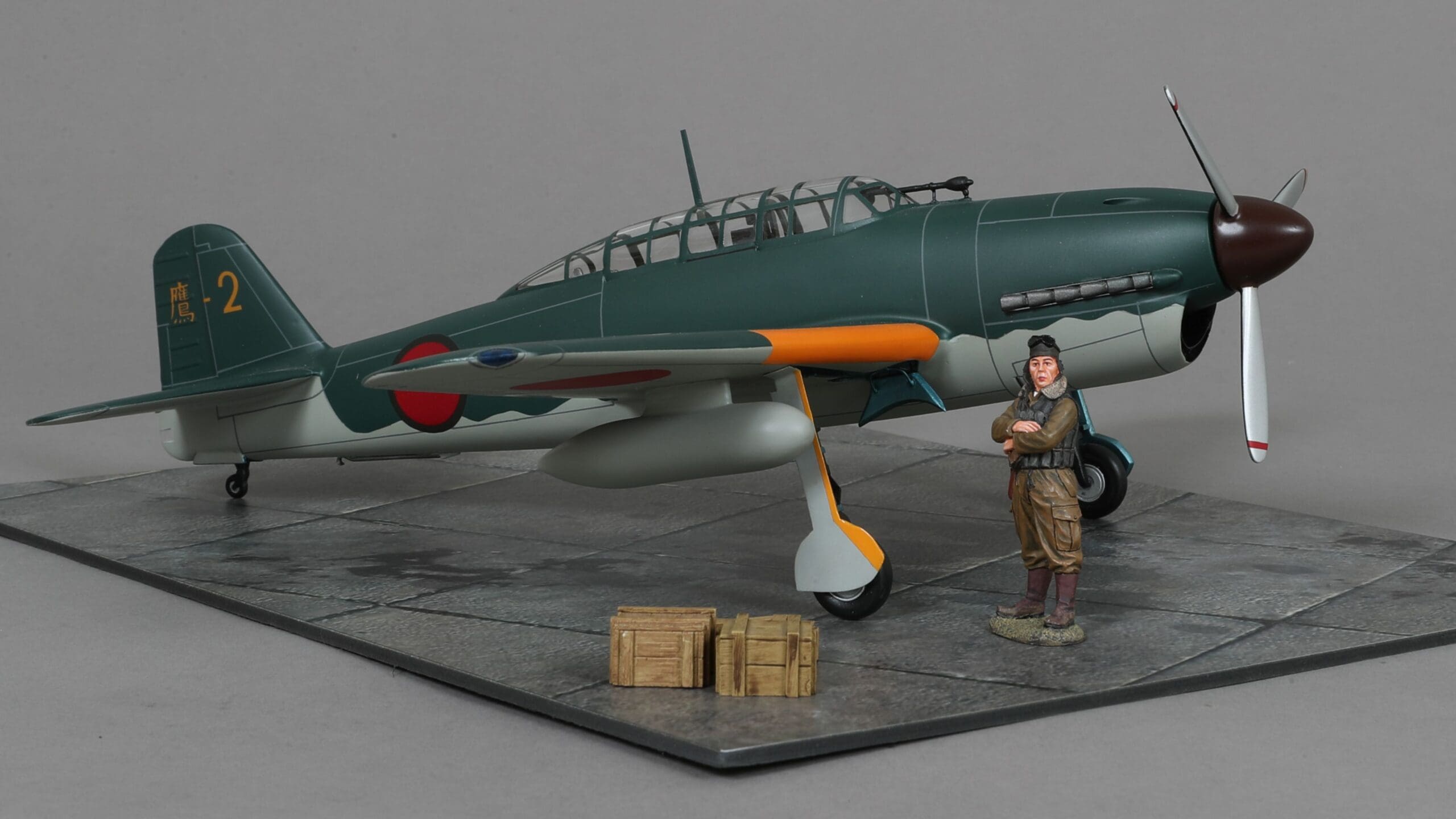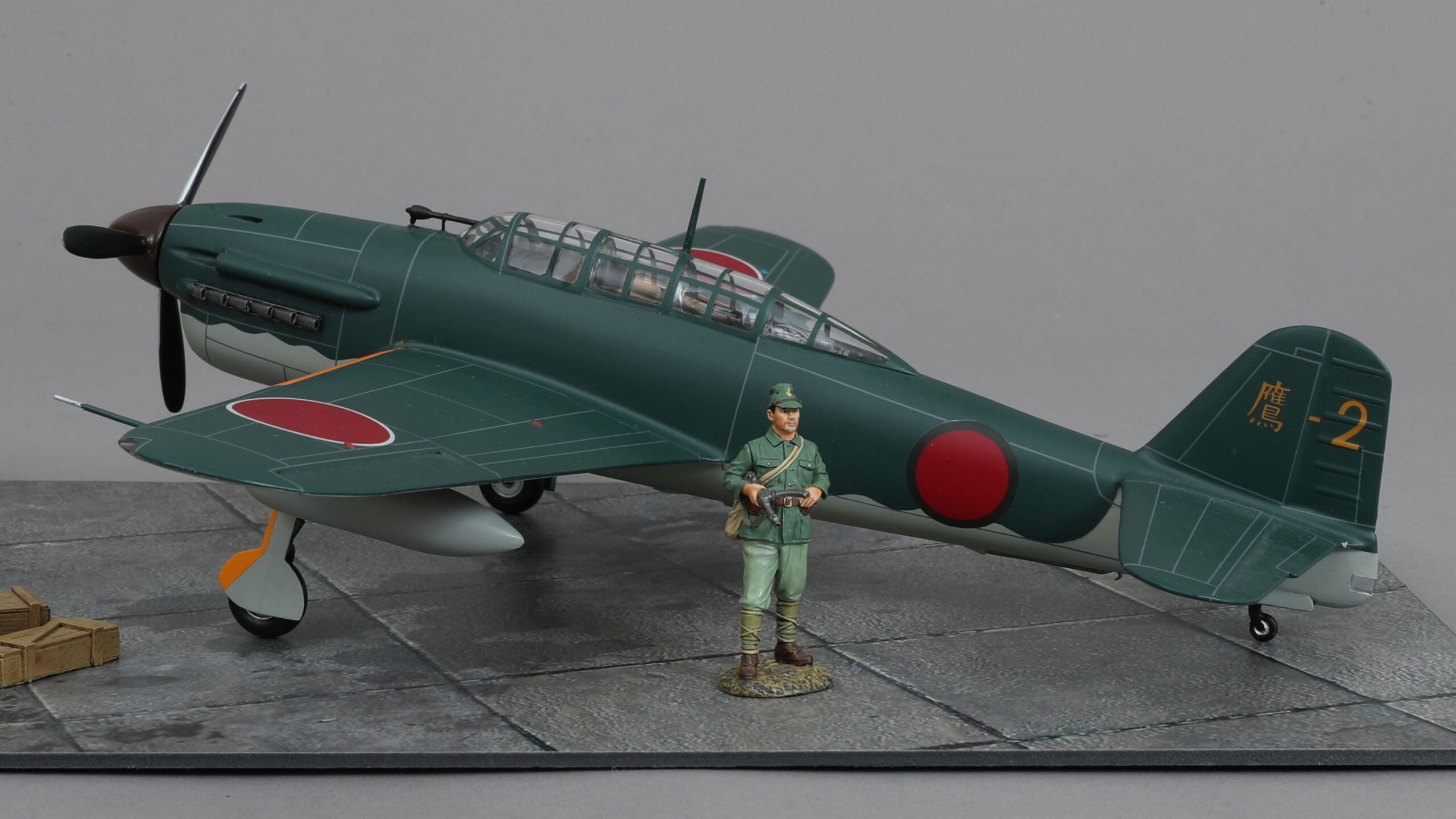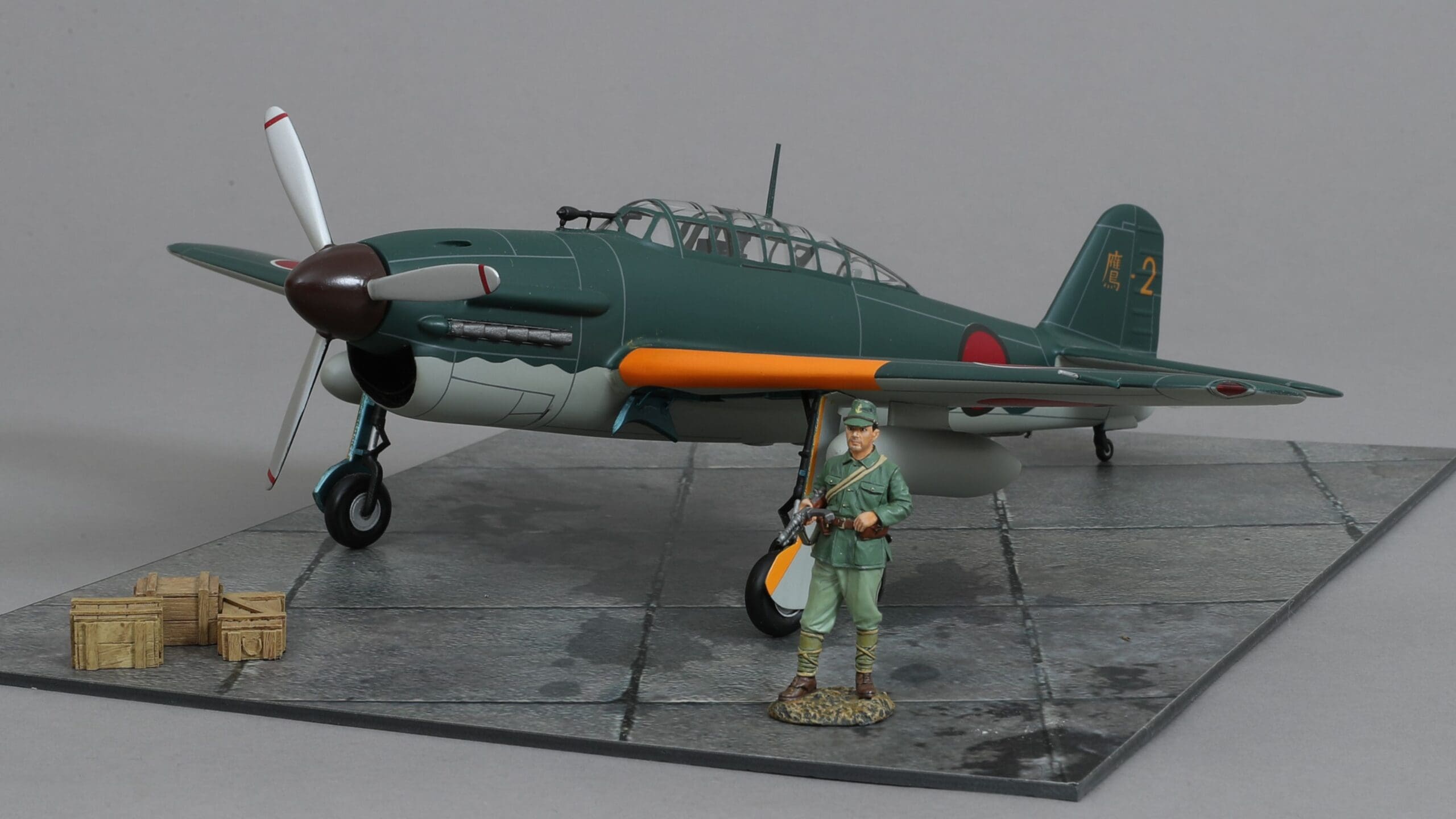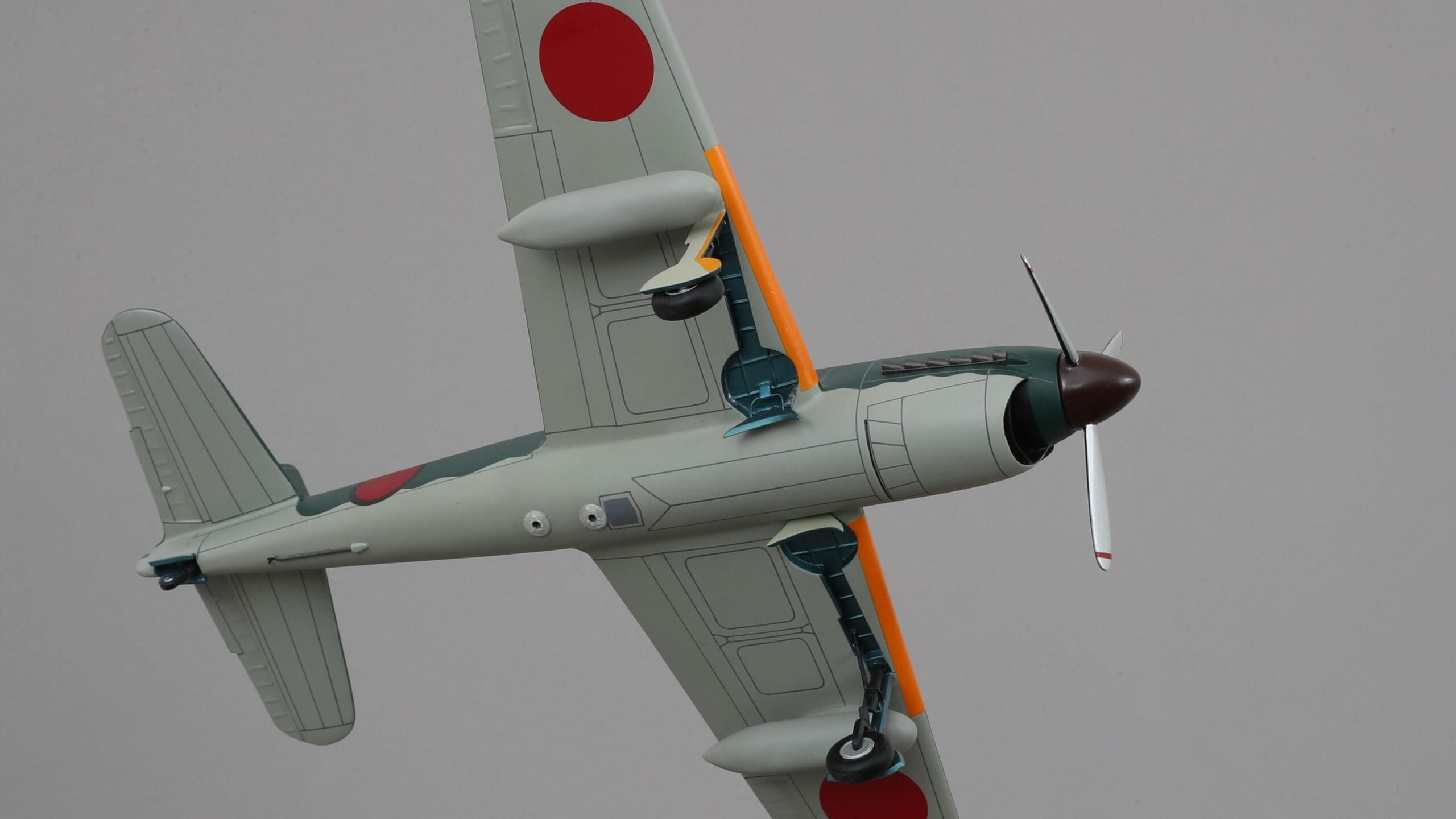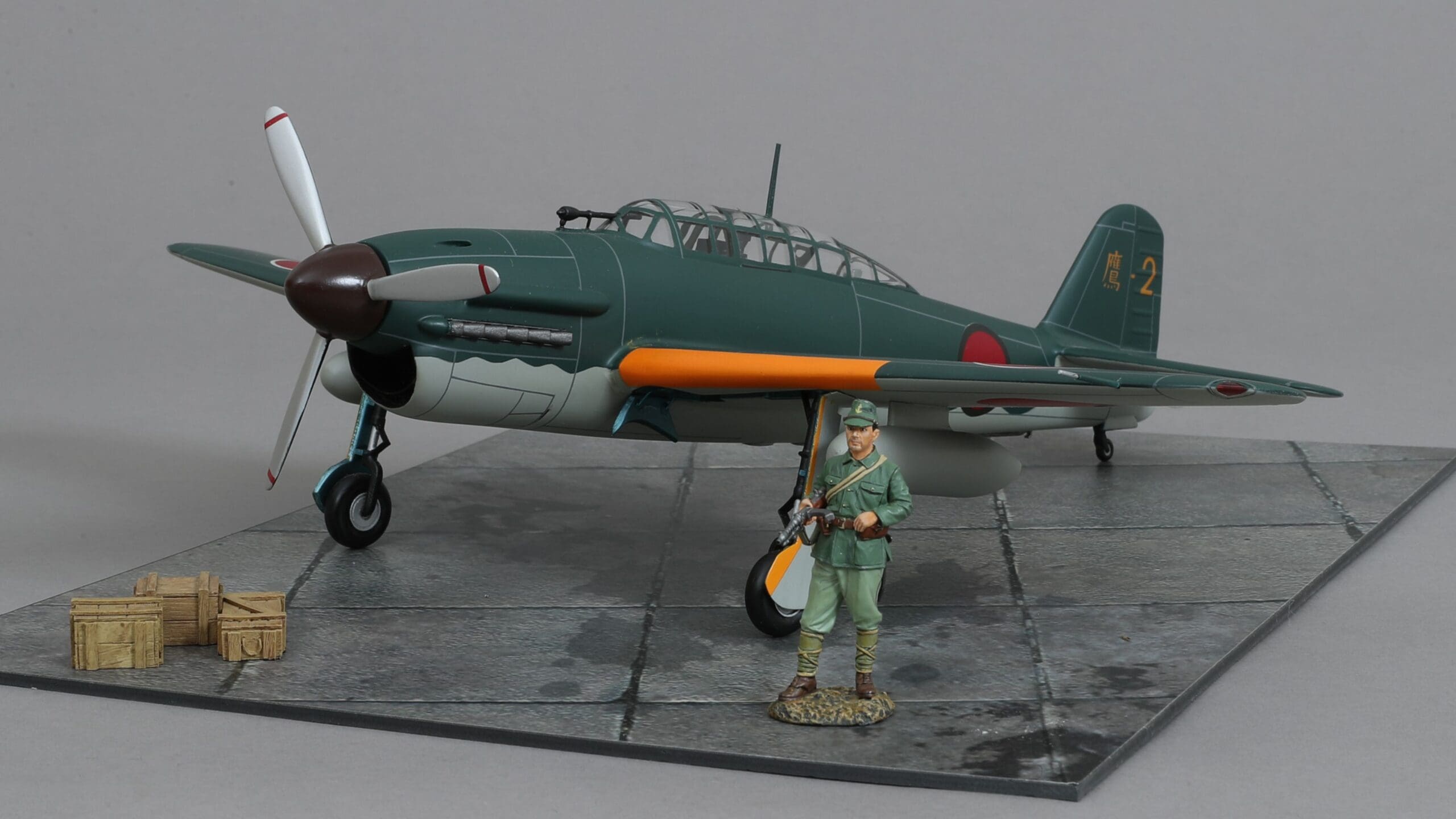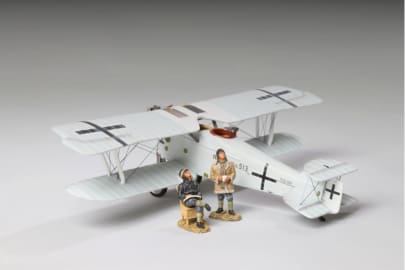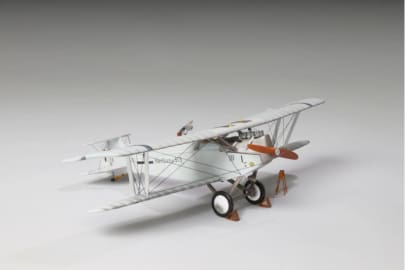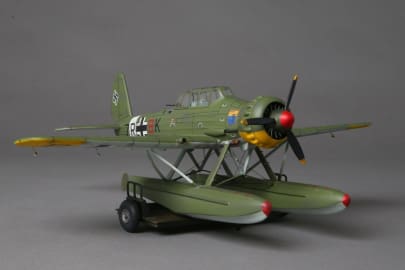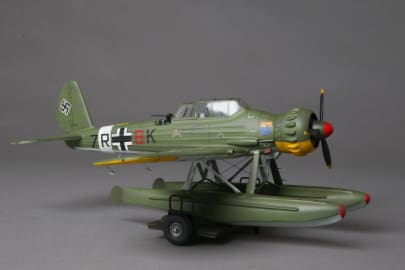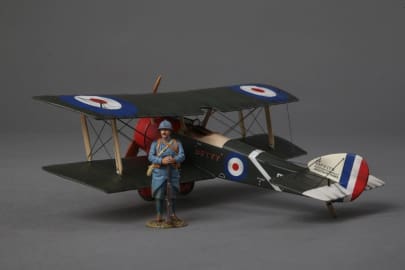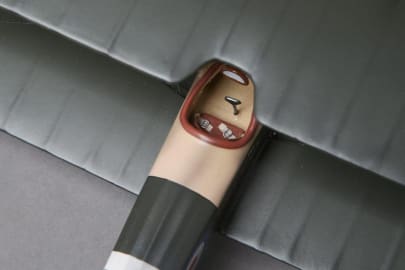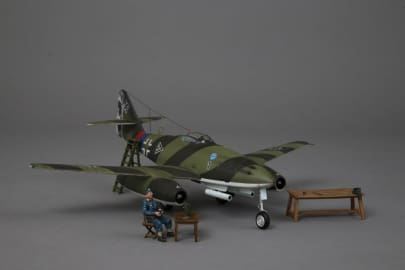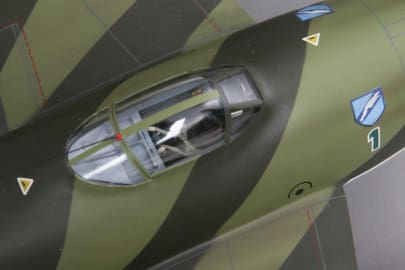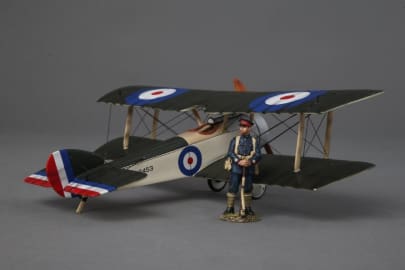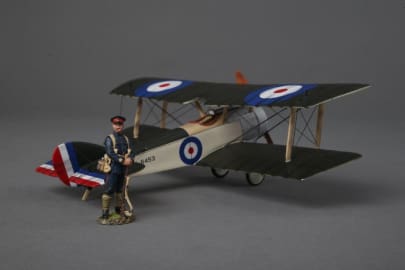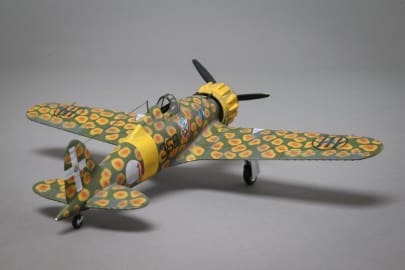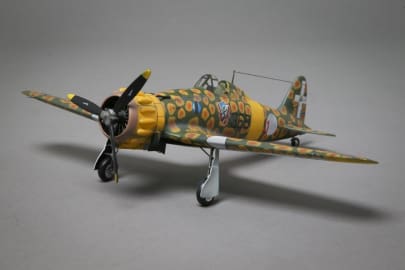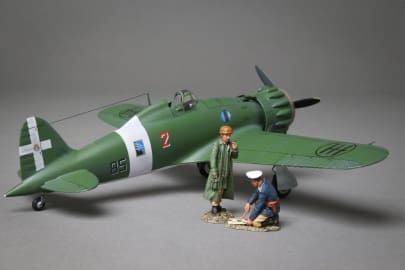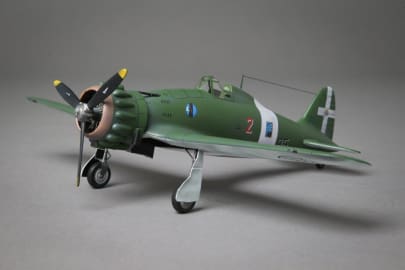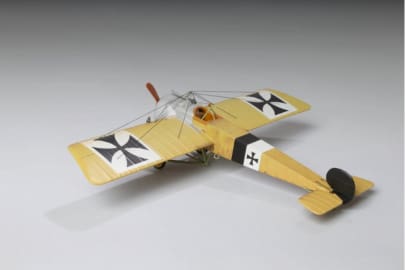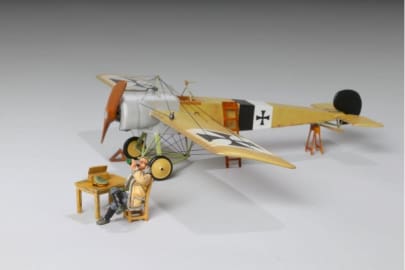- Free shipping available on orders over £100 (UK) £250 (EU) and $300 rest of the world
WOW523 Yokosuka Judy
£680.00
Out of stock
Description
Description
The Yokosuka D4Y Suisei (Judy) was a two-seat carrier based dive bomber developed by the Yokosuka Naval Air Technical Arsenal and operated by the Japanese Navy from 1942 to 1945 during WW2. Development of the aircraft began in 1938. The first D4Y1 was completed in November 1940 and made its maiden flight at Yokosuka the following month.
While the aircraft was originally conceived as a dive bomber, the D4Y was used in other roles including reconnaissance, night fighter and Kamikaze. It made its combat debut as a reconnaissance aircraft when two pre-production D4Y1-Cs embarked aboard the carrier Soryu to take part in the Battle of Midway in 1942. It was not until March 1943 that it was accepted for use as a dive bomber.
Lacking armor and self-sealing fuel tanks, the Suiseis did not fare well against Allied fighters. They did, however, cause considerable damage to ships, including the carrier USS Franklin which was nearly sunk by a D4Y and the light carrier USS Princeton which was sunk by a single D4Y.
The D4Y’s operated from the following Japanese aircraft carriers: Chitose, Chiyoda, Junyo, Shinyo, Shokaku, Soryu, Unyo and Zuikaku and saw action in just about every part of the pacific campaign.
The D4Y1-C reconnaissance aircraft version entered service in mid-1942, when two of these aircraft were deployed aboard Sōryū at the Battle of Midway, one of which was lost when Sōryū was bombed. The other had been launched on a scouting mission and returned to Hiryū; it was then lost when Hiryū was bombed.
As the war neared its conclusion Allied Task Force 58 approached southern Japan in March 1945 to strike military objectives in support of the invasion of Okinawa. The Japanese responded with massive kamikaze attacks, codenamed Kikusui, in which many D4Ys were used. A dedicated kamikaze version of the D4Y3, the D4Y4, with a non-detachable 800 kg bomb attached in a semi-recessed manner, was developed. The Japanese had begun installing rocket boosters on some Kamikazes, including the D4Y4, in order to increase speed near the target. As the D4Y4 was virtually identical in the air to the D4Y3, it was difficult to determine the sorties of each type.
The carriers USS Enterprise & Yorktown were damaged by D4Y’s of 701 Wing on 18 March. On 19 March, the carrier USS Franklin was hit with two bombs from a single D4Y. Franklin was so heavily damaged that she was retired until the end of the war. Another D4Y hit the carrier USS Wasp.
On 12 April 1945, another D4Y, part of Kikusui mission N.2, struck Enterprise, causing some damage.
During Kikusui N.6, on 11 May 1945, USS Bunker Hill was hit and put out of action by two kamikazes that some sources identify as D4Ys. This was the third Essex-class carrier forced to retire to the United States to repair.
The D4Y was faster than the A6M Zero, and some were employed as D4Y2-S night fighters against the B-29 Superfortress bombers late in the war. The night fighter conversions were made at the 11th Naval Aviation Arsenal at Hiro. Each D4Y2-S had its bombing systems and equipment removed and an upward facing gun installed in the rear cockpit, with the barrel slanted up and forwards in a similar manner to the German night fighter system. Some examples also carried two or four 10 cm air-to-air rockets under the wings; lack of radar for night interceptions, inadequate climb rate and the B-29’s high ceiling limited the D4Y2-S effectiveness as a night fighter. Little is known of their operations.
At the end of the war, D4Ys were still being used operationally against the U.S. Navy. Among the last of these were 11 aircraft led by Vice Admiral Matome Ugaki on a suicide mission on 15 August 1945 hours after the Japanese surrender, of which all but three were lost. Ugaki decided to ignore the Japanese surrender and pressed on with this final pointless mission taking his men to their death rather than endure the shame of defeat.
Our 1/30 scale model measures 38cm wide by 34cm long and is priced at $850 plus postage.
The TG/K&C figures are shown for scale comparison purposes only and are not included.

